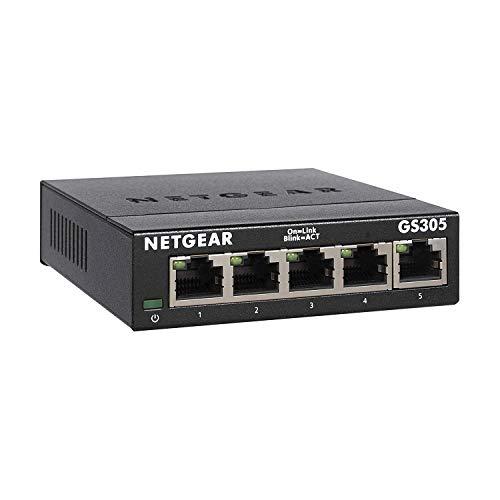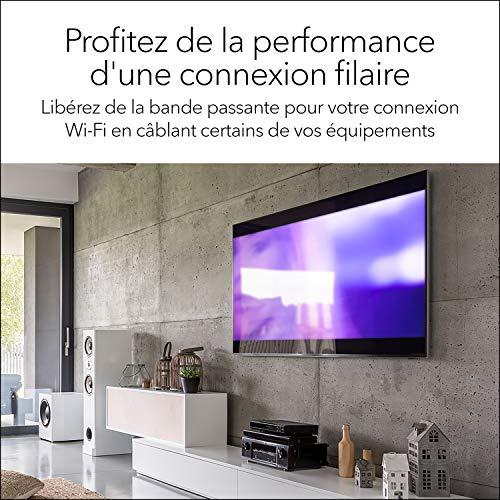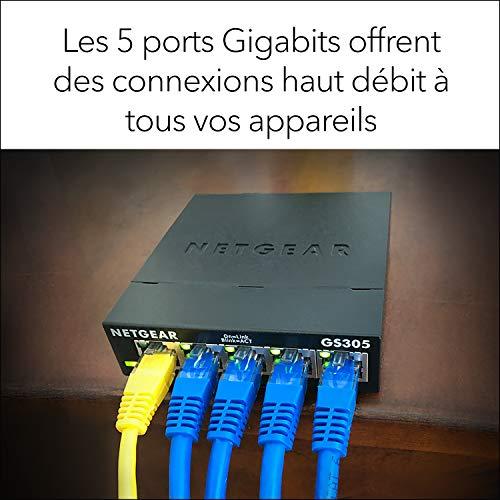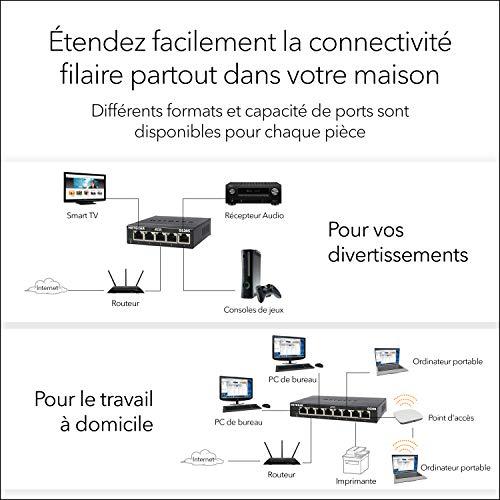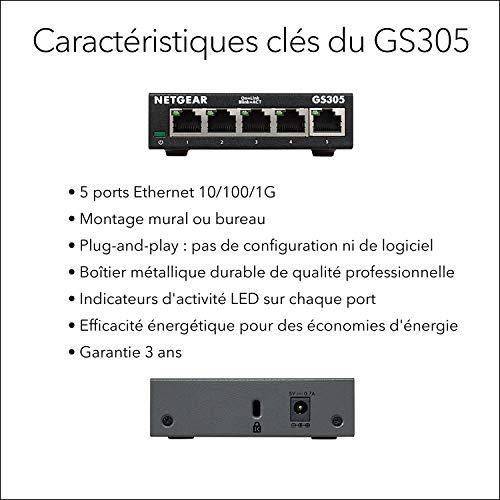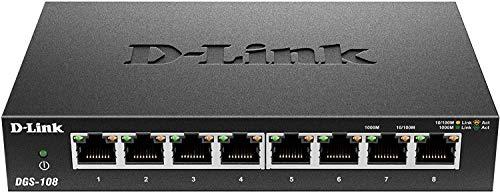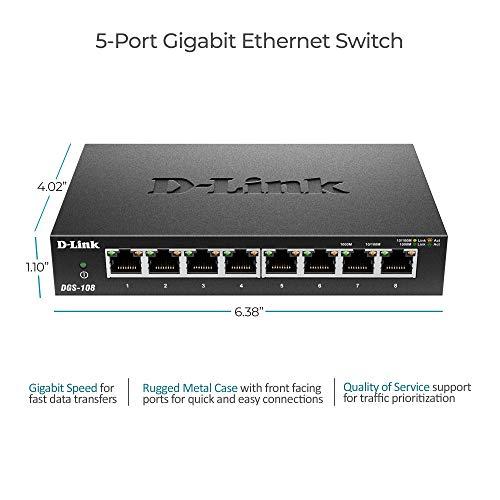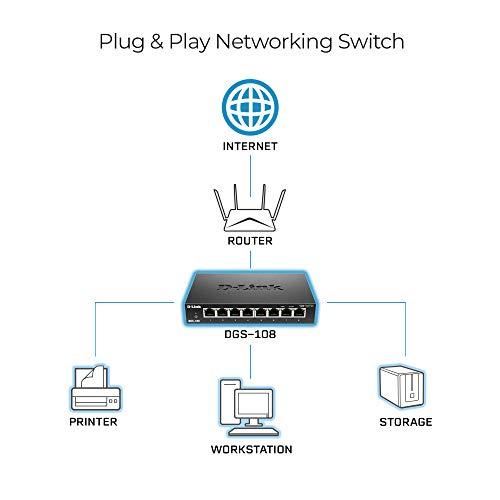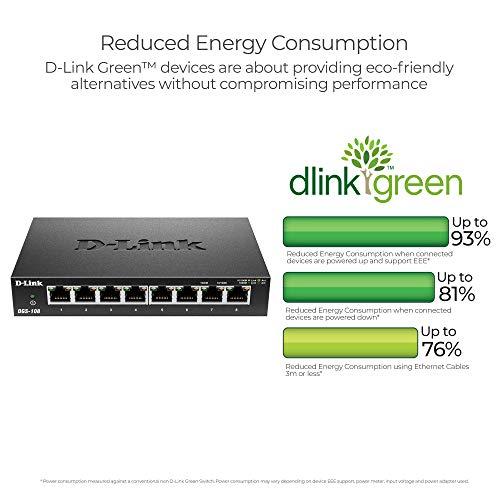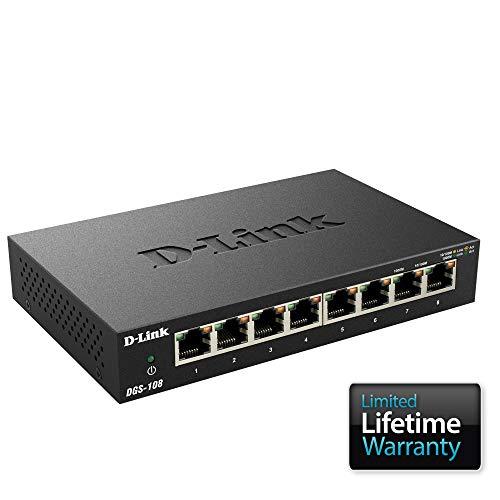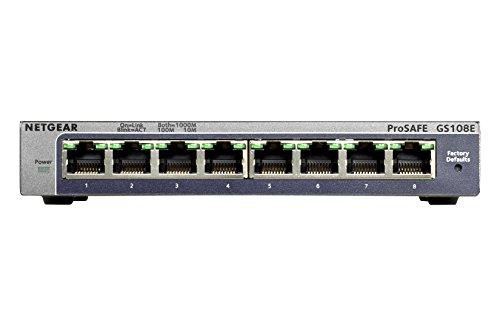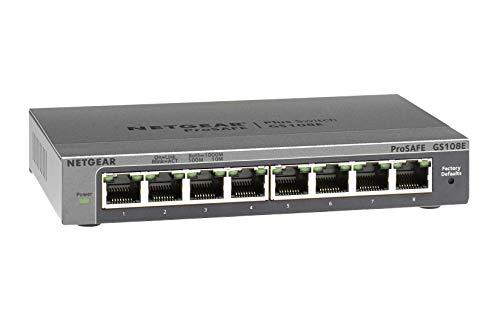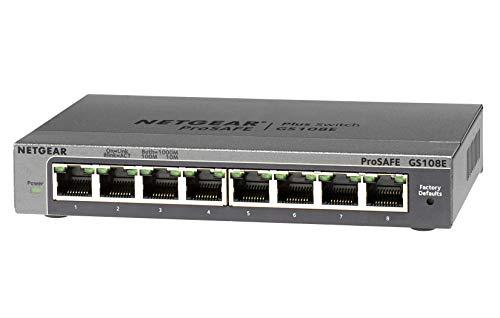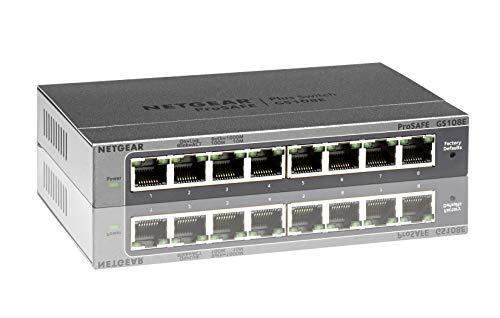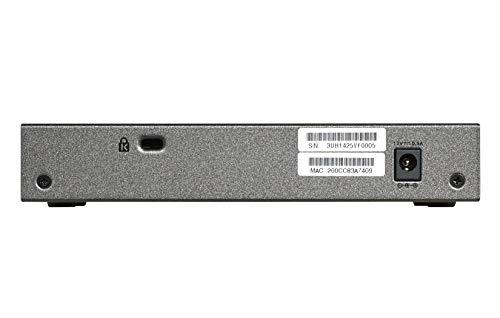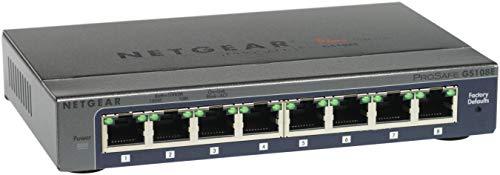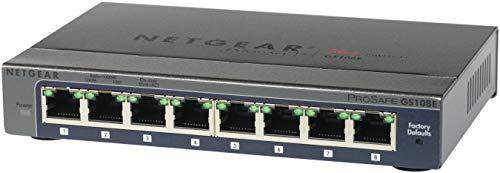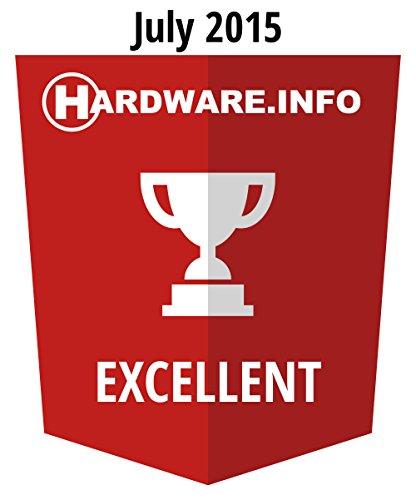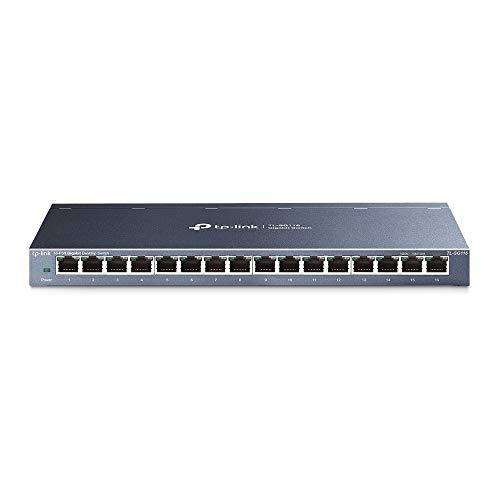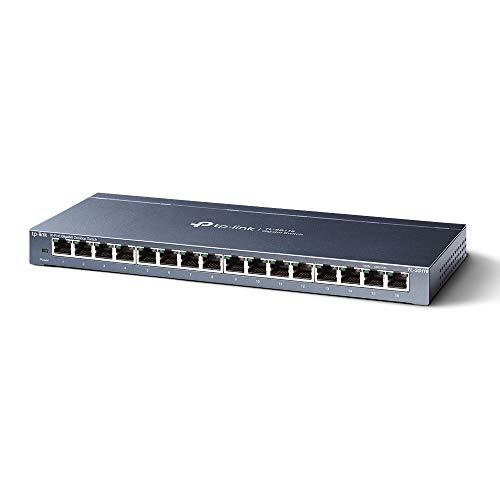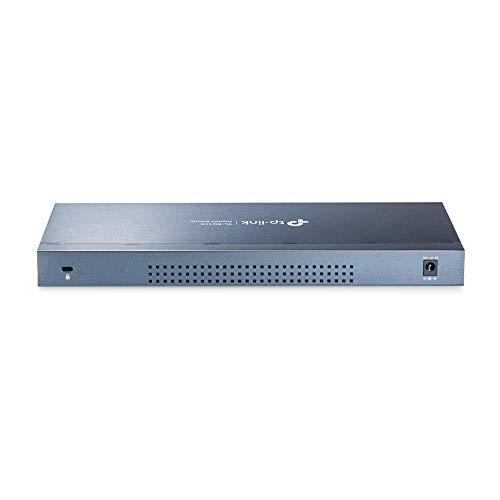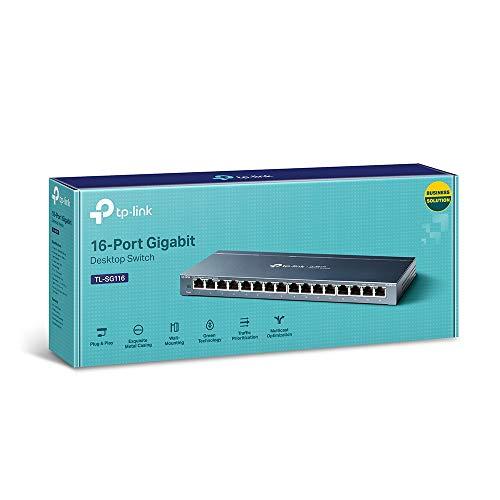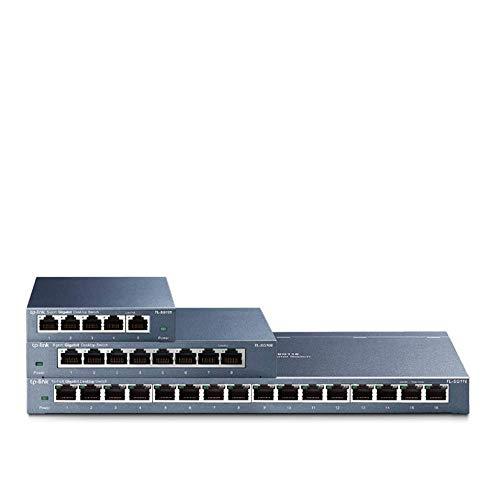Best Ethernet Switch in 2025
The Ethernet switch is the control center for combining or distributing Ethernet data streams. A distinctive feature of such devices is the front view, which consists of a series of adjacent or superordinate Ethernet ports. An Ethernet cable with a so-called RJ45 connector can be plugged into each Ethernet port. In general, all ports have the same function and performance and it does not matter in which port, or which cable from which device is plugged in.
Each Ethernet frame contains the address of the sender (source) and the address of the receiver (destination). Ethernet switches maintain a table with an assignment behind which Ethernet port, and which devices are connected with their addresses. In this way, an Ethernet switch can forward received Ethernet frames to the correct port behind which a receiver can be reached.
In a home network, Ethernet switches are used centrally to distribute the individual data stream coming from the Internet router to several Ethernet ports. By connecting Ethernet cables to the Ethernet switch, all rooms in a whole house can then be connected to their home network, for example. On the other hand, it is very easy to increase the number of required Ethernet ports decentrally with an Ethernet switch, if the existing ones are no longer sufficient. Examples for such application scenarios can be found in the chapter about transmission media.
Here is a selection of manufacturers of Ethernet switches that can also be used in home networks (in alphabetical order):
- Cisco
- D-Link
- Edimax
- Hewlett Packard
- LinkSys
- Netgear
- TP-Link
- ZyXEL
In the following, various criteria are listed, which are intended as a guide to facilitate the selection of a suitable Ethernet switch. The focus here is on devices for the home network or small offices, which do not have to be as sophisticated and powerful as devices for larger companies and organizations.
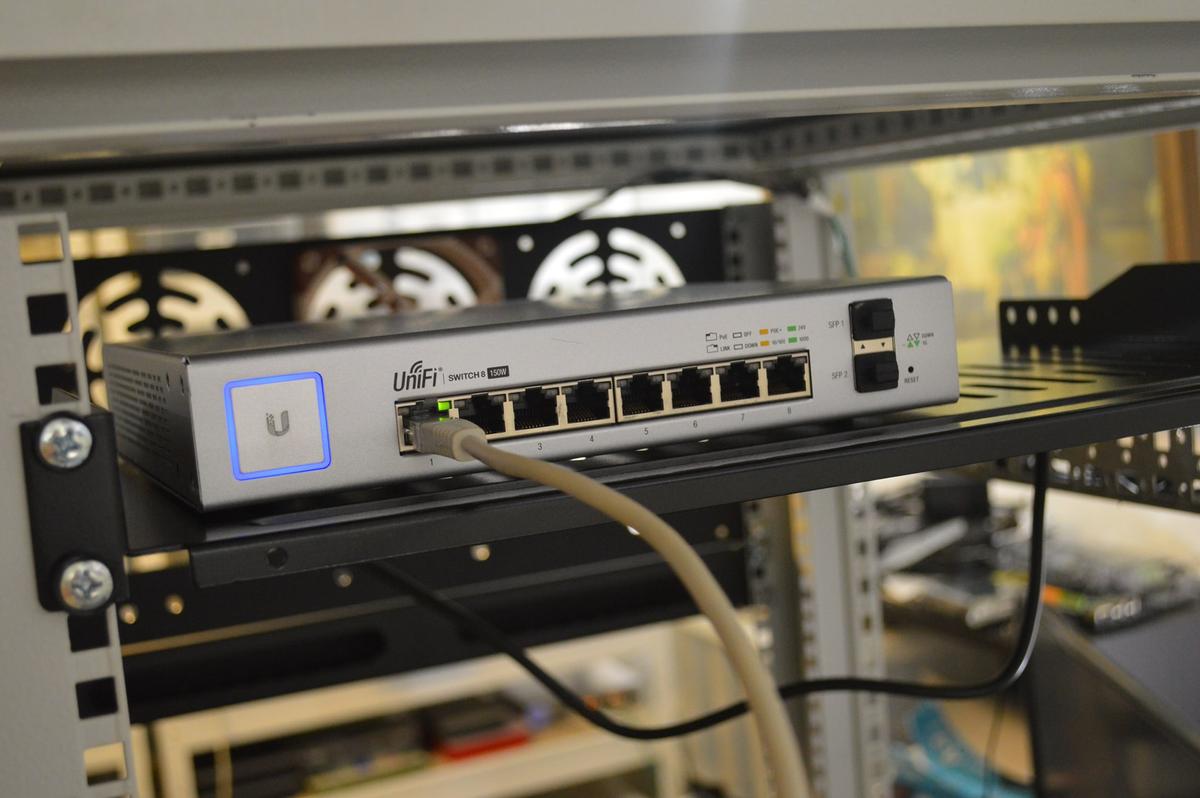
Who needs an Ethernet Switch?
If you have a few devices that you want to connect, you don’t necessarily need a switch. A router is sufficient for connecting a PC to a printer. If several devices such as game consoles, the smart TV, and a receiver are to be integrated into the network, this can be done via WLAN. If a stable and interference-free connection is to be guaranteed – for gaming, for example – LAN is the better choice than WLAN.
In this case, a switch is a good solution. Due to the increase in electronic devices and the growing popularity of home offices, switches are now a popular option in the private sector. Nowadays, companies can no longer do without switches if a network is to be set up and intelligently controlled.
An Ethernet switch is not the only option when connecting multiple IT devices. Unlike a switch, which forms a network, a router connects a network. Several components can also be connected to a router via LAN or WLAN, but the number of LAN ports on a router is usually limited to three or four slots and the data transfer is also limited – unlike WLAN. Another option is a hub. Unlike the switch, however, a hub distributes the data to all connected devices and not specific to a single port.
What is the Best Ethernet Switch?
Netgear GS305
The best 5-Port gigabit Ethernet switch
The Netgear GS305 switch belongs to the category of unmanaged switches. Thanks to Plug and Play, there is no need for a lengthy setup; the switch is ready for use in the home network as soon as it is connected. It is equipped with five ports, so four devices can be connected.
The numerous features that Netgear’s GS305 switch has are practical. Power Over Ethernet supplies power to connected devices such as IP cameras, VoIP phones and wireless access points. According to the manufacturer, this is energy efficient and eliminates the need for separate outlets to power the devices. Quality of Service enables traffic and frame prioritization of time-critical data. Auto-MDI/MDIX eliminates the need for special crossover cables. LED indicators simplify operation.
The Netgear GS305 switch in the comparison is fanless and quiet, according to the manufacturer. It also has a wall mount. This makes this switch suitable for small workstations. It is a gigabit switch. The transmission speeds of 10, 100 and 1,000 gigabits per second (GBit/s) are supported.
D-Link DGS-108
The best 8-Port unmanaged Ethernet switch
The D-Link DGS-108 switch is equipped with eight ports. All ports support the three transmission speeds of 10, 100 and 1,000 megabits per second (Mbps), with the interfaces automatically detecting the speed. Two-color LED indicators inform each port whether it is working and at what data rate. The maximum data transfer speed is 2,000 megabits per second (MBit/s) in full-duplex mode.
In addition, time-critical data is prioritized using QoS. QoS stands for Quality of Service and is used for efficient data management and forwarding. All ports support automatic MDI/MDIX adaptation. The use of crossover cables is not necessary. The DGS-108 switch from D-Link is an unmanaged switch. This eliminates the need for cumbersome configuration. Thanks to Plug and Play, the distributor is immediately ready for use after being connected. The manufacturer promises that the switch operates quietly due to its fanless design.
Netgear GS108E
The best 8-Port managed Ethernet switch
The Netgear GS108E is a managed switch. This means extensive configuration options, but requires some knowledge about networks. Those who don’t shy away from configuration will benefit from numerous options. Simple VLAN, QoS, IGMP Snooping, Storm Control and Auto DoS are just a few of the advanced network features. The Gigabit switch has eight ports.
For configuration, backup, monitoring and control, the switch comes with management software with intuitive web GUI. Web GUI means a graphical user interface that can be accessed via a specified URL in the browser. Routers, for example, are usually set up and configured via a web GUI.
Thanks to a wall mount, the switch from the comparison can be mounted in a space-saving manner at the workplace, according to the manufacturer. The fanless design is supposed to reduce noise.
TP-Link TL-SG116
The best 16-Port Ethernet switch
With the TP-Link TL-SG116 you can make the transition to Gigabit Ethernet. It is an unmanaged switch with 16 ports, each of which has a transmission rate of 2 GBit/s (32 GBit/s in total). Due to its fanless metal housing, it is ideal for wall mounting or desktop installation and stands out due to its silent operation.
This network switch can be easily set up via plug and play and the built-in Green IT ensures energy savings. QoS enables latency-free data traffic for voice and video. In addition, IGMP snooping optimizes multicast data streaming, distributing data to multiple receivers quickly and efficiently.
Criterias for Buying an Ethernet Switch
Ethernet
The actual core function of an Ethernet switch, the switching of Ethernet frames, is standardized via the IEEE802.1D standard and every Ethernet switch should function in the same way here. Since the function of forwarding Ethernet frames is implemented in hardware, no significant difference is to be expected in the switching performance between different Ethernet switches for home use.
The most significant differences for the home network are in the number of Ethernet ports offered, the type of Ethernet ports and the design of the Ethernet switch device itself. Also the possibility of an Ethernet switch to make settings or to retrieve information is differently pronounced, but more about this later.
The number of Ethernet ports on an Ethernet switch varies between 4 and 48, so it is easy to choose a suitable Ethernet switch with regard to the number of Ethernet ports. However, it is advisable to have a few free Ethernet ports in reserve, as the need to network devices will increase in the future.
Regarding the type of Ethernet ports, the electrical Ethernet ports, which are connected via cables with so-called RJ45 connectors, are mainly of interest for a home network. These electrical Ethernet connections offer Fast Ethernet (100Mbit/s) and mostly also Gigabit Ethernet (1000Mbit/s). For home use, Fast Ethernet is usually still sufficient, but the trend towards higher data rates continues and it is therefore recommended to use Gigabit Ethernet. Ethernet ports with Gigabit Ethernet also support Fast Ethernet, so even older devices can be connected without problems. Some Ethernet switches also offer 1 or 2 SFP (Small Formfactor Pluggable) slots. In such a slot a separate SFP module can be plugged in. SFP modules are mostly used to provide an optical Ethernet connection and to establish a fiber optic connection over it. Fiber optic connections are rarely found in a home network. It is only worth paying attention to the availability of an SFP slot if you have a reasonable use case in your individual case.
The design of an Ethernet switch usually correlates with the number of Ethernet ports offered. For example, there are very small 4 port Ethernet switches, which are well suited for decentralized applications to make new Ethernet ports available quickly. For so-called rack installations in small cabinets specially designed for network technology, there are Ethernet switches in 19-inch format. If you want to network your home and place your networking equipment in a central room, then installing a small 19inch network cabinet can keep things tidy. In this case, it fits well if an Ethernet switch to be installed in it has a 19inch design.
The function of being able to prioritize data streams when sending them onto an Ethernet line is unusual in a home network, where smaller amounts of data tend to be transmitted. Gigabit Ethernet in particular has enough power for home use to avoid bottlenecks and transmit incoming data sufficiently fast. However, if you are running VoIP (Voice over IP) over your home network and at the same time want to transfer larger amounts of data very quickly over the network (e.g. storing large amounts of data on a NAS/media server), then it is advisable to be able to prioritize the data transfer from your VoIP phone. The Ethernet switch used should then have a corresponding function. You can also use a prioritization function to optimize latency for online gaming.
Television via a video stream (IP-TV), is often sent via so-called multicast. This means that all interested devices can receive the TV stream, but it only has to be sent once. To ensure that only interested devices receive the TV stream, the Internet Group Management Protocol (IGMP) is used at the sender and the receiving device. But also Ethernet switches in your network should be able to handle IGMP, the so called IGMP snooping. IGMP snooping ensures that an Ethernet switch only forwards multicast data traffic to connections to which a device interested in receiving the data is actually connected. Otherwise, the multicast traffic would be forwarded to all connections, which can cause an overload of end devices and connections that are not designed for it.
Power over Ethernet (PoE)
It is sometimes a problem for the desired installation location of a network camera, a WLAN access point or a Voice over IP telephone to establish not only the network connection, but also a power connection. This is where Power over Ethernet can help. With Power over Ethernet (PoE) according to the IEEE802.3at standard, a device can be supplied with up to approx. 25W of power via the network cable. The need for a dedicated power connection is then eliminated. According to a hardware-based scheme, an Ethernet switch with integrated PoE function detects whether a PoE-capable device is connected and then switches on the power supply. Data transmission is not affected by the simultaneous power transmission and runs in parallel. Since PoE is available according to the older IEEE802.3af standard, according to the newer IEEE802.3at standard and in manufacturer-specific variants, it is advisable to plan the deployment in advance and to check the compatibility of the devices with each other. Paying attention to the availability of PoE in an Ethernet switch is only recommended if there are specific intended uses or if they are foreseeable in the near future.
Testing and troubleshooting
A significant differentiator of Ethernet switches is whether an Ethernet switch is “unmanaged” or “managed”. The simplest and cheapest Ethernet switches are “unmanaged”. This means that there is no interface for configuration or information retrieval. For commissioning, the Ethernet switch is installedg and the cables are plugged in. The LEDs on the Ethernet switch are the only indication, apart from a successful data transmission itself, whether everything is working. There are wide differences in the range of “managed” switches. For example, some Ethernet switches offer a so-called SNMP (Simple Network Management Protocol) interface for professional integration into an NMS (Network Management System). SNMP is unusual for a home network and is usually not required. The possibility in itself to make configurations or to retrieve information via e.g. a user interface in the web browser can be very useful again. Even very simple “managed” switches offer the possibility to retrieve statistics about the Ethernet ports. From these statistics you can see if your Ethernet connection is working properly. It is also useful to be able to see directly whether a Gigabit Ethernet connection is really running with Gigabit Ethernet as expected or not. For advanced troubleshooting, some managed switches can copy the traffic running over one Ethernet port and output it to another Ethernet port, e.g. to perform a protocol analysis with the Wireshark tool. Since simple managed Ethernet switches do not differ much in price from unmanaged Ethernet switches, it is recommended to buy a managed Eternet switch. Simple “managed” Ethernet switches for private customers are sometimes also distinguished from the professional “managed” Ethernet switches by the respective manufacturers with their own class designation. Examples of such a class designation are smart switches or web managed switches.
Usability
Simple Ethernet switches are very straightforward to install and operate. With “managed” Ethernet switches, however, easy access to the Ethernet switch and a good structure of the user interface is definitely a criterion that can make a difference in the choice between Ethernet switch A or Ethernet switch B. But it is not easy to judge the usability of a device without own experience. You can get an impression by reading the manual of an internet router. Alternatively, tests can be used if this criterion is mentioned. Similar to the following criterion of “usability”, the experiences of others are also very helpful here, especially if problems have occurred.
Design
In case you want to place an Ethernet switch directly on your desk, for example, then there are desktop Ethernet switches. These are meant for desktop use and sometimes have a more pleasing design.
Price
Simple “unmanaged” 8 port Ethernet switches, which only offer Fast Ethernet, are sometimes available for less than 10 dollars. Simple “managed” 8 port Ethernet switches with Gigabit Ethernet are priced at a few 10 dollars. The price of somewhat larger “managed” 24 port Ethernet switches with Gigabit Ethernet ranges from about 50 dollars to several hundred dollars, depending on performance and included features.
FAQs on Ethernet Switches
What are the alternatives to a Ethernet switch?
As an alternative to a Ethernet switch, there is a hub or a standard router.
What is a Hub?
A hub is often used to connect segments of a LAN (Local Area Network). A hub contains multiple ports. When a packet arrives on one port, it is copied to the other ports so that all segments of the LAN can see all packets. A hub acts as a common connection point for devices on a network.
What is a Router?
A router is connected to at least two networks, usually two LANs or WANs (Wide Area Networks) or a LAN and its ISP (Internet Service Provider) network. The router is usually located at the gateway points where two or more networks are connected. Using headers and forwarding tables, the router determines the best path to forward packets. In addition, the router uses protocols such as ICMP (Internet Control Message Protocol) to communicate with each other, and it configures the best route between any two hosts. In summary, routers can be used to forward packets.
What is the difference between a Hub and a Switch?
Each serves as a central connection for all their network devices and processes a type of data called frames. Frames carry their data. When a frame is received, it is amplified and then transmitted to the port of the destination PC (personal computer). The big difference between a hub and a switch is the method in which frames are delivered.
In a hub, a frame is delivered along or “broadcast” to each of its ports. It does not matter that the frame is destined for only one port. The hub has no way to distinguish which port a frame should be sent to. Broadcasting to each port ensures that it reaches its intended destination. This places a lot of traffic on the network and can result in poor network response times. In addition, a 10/100MBit hub must share its bandwidth with each of its ports.
In comparison, a switch keeps a record of the Mac (Media Access Control) addresses of all devices connected to it. With this information, a switch can tell which system is on which port. So when a frame is received, it knows exactly which port to send it to without significantly increasing network response times. In addition, unlike a hub, a 10/100Mbit switch will allocate a full 10/100Mbit/s option for each of its ports. So regardless of the number of PCs transmitting, users will always have access to the maximum amount of bandwidth. For these reasons, a switch is considered a much better choice than a hub.
How is an Ethernet switch connected correctly?
To connect the Ethernet switch to the router, you need a patch cable. You plug one end of the cable into one of the existing ports of the router and the other end into the LAN/Ethernet port of the switch.
How can I set up a managed Ethernet switch?
Managed Ethernet switches can usually be set up via the web browser. In some cases, the manufacturer also provides a separate software, which you must first install on your computer.
DHCP enabled: In the best case, the Ethernet switch already has DHCP enabled and is connected to a DHCP server. The server is usually integrated in the router. The IP address is automatically forwarded from the router to the Ethernet switch.
You can read the IP address from the router under connected devices and enter it into the web browser so that the user interface of the switch appears. And you can start with the configuration of your Ethernet switch.
DHCP disabled: If your switch already has its own IP address and DHCP is not active, you must first read the manual to find out which IP address has been assigned. After that you have to disconnect the switch and the computer you want to use to configure your network.
In the next step you assign your PC with the already given IP of the manufacturer and connect to the Ethernet switch. Then enter the IP address into the web browser as usual to open the user interface.
